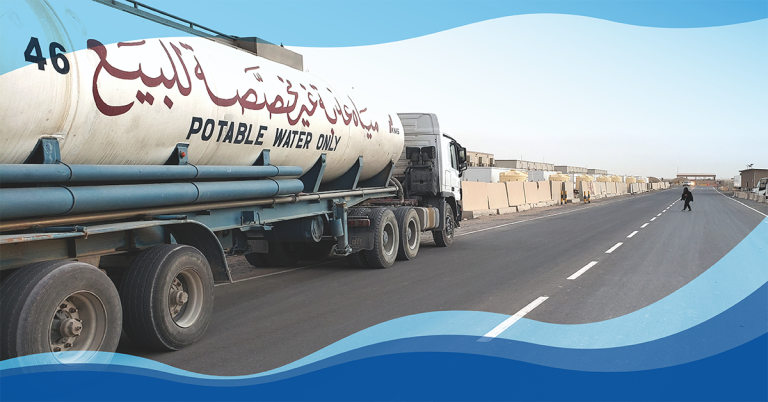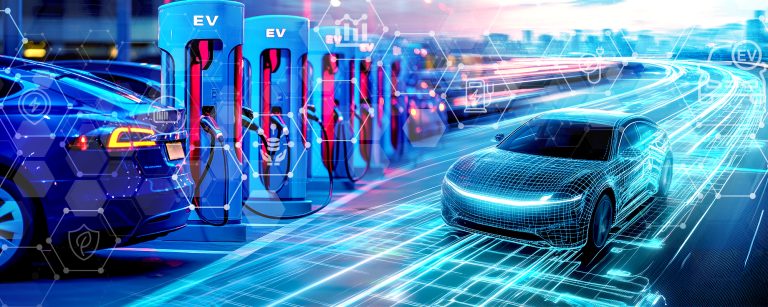Wind Energy
Developing Secure and Resilient Wind Energy Technologies for the Future
What is Wind Energy?
The INL Wind Energy Research Program is a leading national research and development program focused on developing technologies and solutions to make wind energy more secure and resilient, affordable, reliable and efficient. Our work spans the entire research and development process, from protecting and developing solutions for operational and legacy systems, to developing and demonstrating innovative solutions for the future.
Benefits of Wind Energy
- Cost-Effective Electricity Generation: Wind power has become increasingly cost-competitive with traditional fossil fuels. Once turbines are installed, operational and maintenance costs are relatively low, providing stable and predictable electricity prices over the long term.
- Energy Security and Independence: By diversifying the energy mix, wind power reduces dependence on imported fossil fuels, enhancing energy security and promoting a more self-sufficient energy supply.
- Job Creation and Economic Growth: Wind energy projects create jobs in manufacturing, construction, operation, and maintenance, contributing to local economies and fostering economic growth.
- Minimal Environmental Impact: Wind farms, depending on wind turbine size, have a smaller environmental footprint compared to fossil fuel power plants. They require relatively little land space, the land around and between turbines remains available for other uses such as farming, and their operations do not deplete natural resources or contribute to water scarcity.
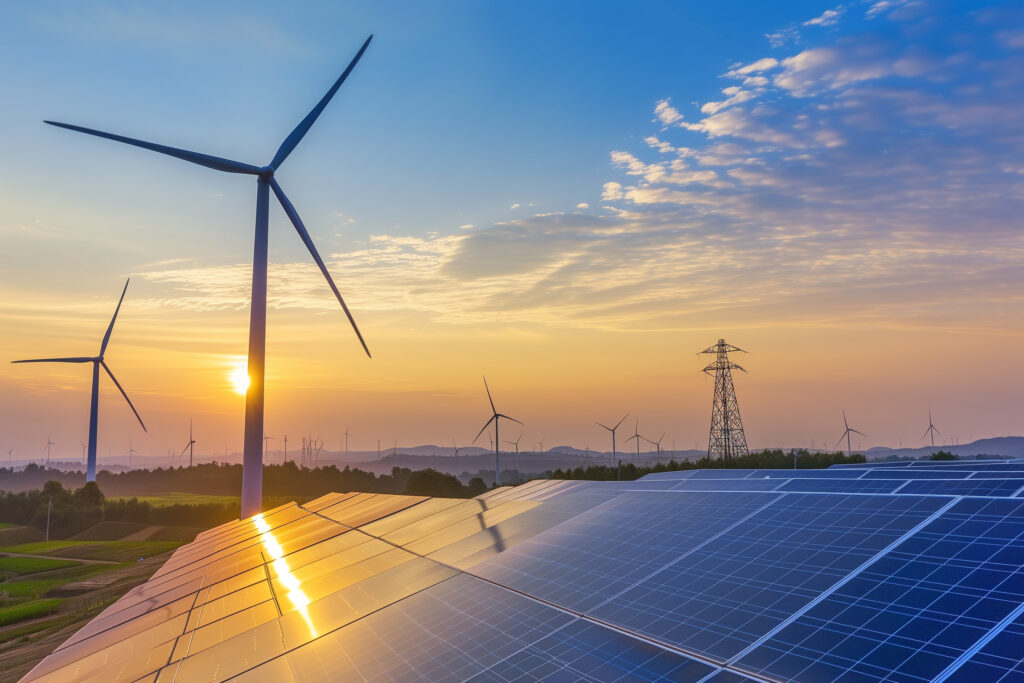
Publications
Attack Surface of Wind Energy Technologies in the United States
Key Capabilities
Led by some of the field’s most prominent researchers, INL is working to develop cutting-edge wind energy technologies to create a more secure and resilient energy future.
Launched in 2022, the On-Site Wind for Rural Load Centers (On-Site Wind) initiative is a multi-laboratory research effort that empowers rural communities to realize the potential of distributed wind energy and tackle obstacles to accessible, reliable and affordable clean energy. The initiative is funded by the U.S. Department of Energy’s Wind Energy Technologies Office. Idaho National Laboratory collaborated with Pacific Northwest National Laboratory, the National Renewable Energy Laboratory, the National Rural Electric Cooperative Association and Iowa State University to address technical, economic and social barriers to distributed wind adoption.
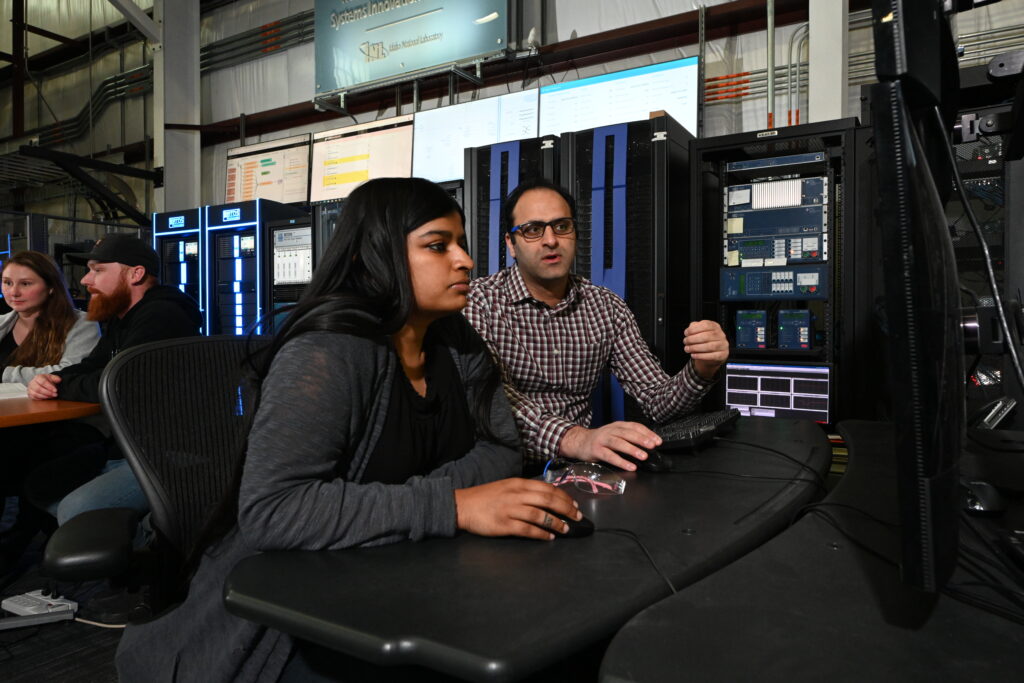
The surge in renewable energy adoption is causing utilities, industries and everyday users to reevaluate how diverse energy systems like wind, solar and hydropower can function together. Renewables must be researched and developed to comprehend challenges and validate solutions before the new technologies are implemented.
In line with this mission, INL established the Power & Energy Real-Time Laboratory (PERL), which uses real-time digital simulators (RTDS) to validate and improve grid reliability and resiliency solutions. The simulators are instrumental in studying the integration of renewable sources like solar or wind power into the existing grid by assessing the impact of these variable energy sources on grid stability, power quality and overall system reliability.
For example, INL used the simulators to develop Type-5 wind drivetrain models to evaluate the behavior of traditional synchronous generators. The technology simulates different conditions and scenarios, leading to better optimization and overall stability of power systems.
INL’s PERL is one of the largest RTDS facilities of any national laboratory, and its researchers work closely with scientists from other national laboratories and academia. For example, INL partnered with the National Renewable Energy Laboratory (NREL), to answer questions about applying hydrogen fuel technology to the grid system. NREL also has RTDS, which means any data collected from their fuel cell research is immediately accessible by INL. This collaboration will advance understanding of how hydrogen fuel cells can support the power grid.
INL researchers are establishing RTDS connections with other national laboratories and universities, and they continue to seek new partnerships in the quest to solve the country’s most pressing renewable energy-related problems.
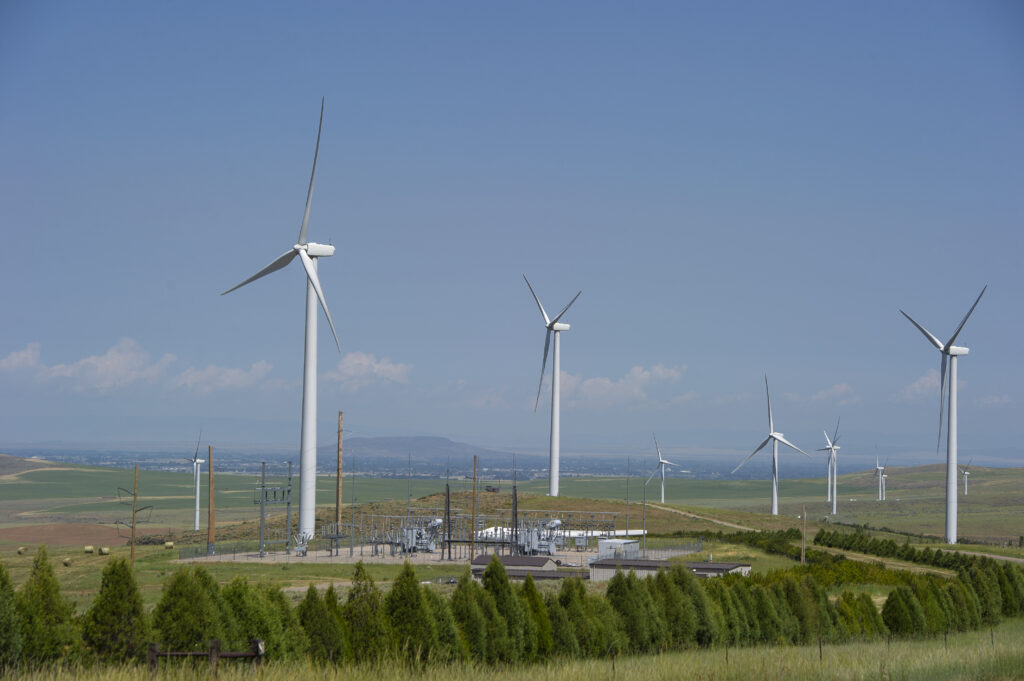
The U.S. electric grid is increasingly vulnerable to cyberattacks, but until recently, renewables such as wind power have received less attention from cyber criminals because they made up such a small percentage of the nation’s overall power generation.
But as wind power’s role in power generation has grown — in 2022, wind turbines provided about 10.2% of total U.S. utility-scale electricity generation — cybersecurity of wind plants has become increasingly important. Researchers at Idaho National Laboratory are leading several U.S. Department of Energy (DOE) Wind Energy Technologies Office (WETO)-funded efforts to protect the nation’s wind generation infrastructure.
Researchers at DOE’s national laboratories are undertaking five security-related wind projects:
- WETO’s Roadmap for Wind Cybersecurity
- Microgrids, Infrastructure Resilience, and Advanced Controls Launchpad
- Defense and Disaster Deployable Wind Turbine
- Hardening Wind Energy Systems from Cyber Threats
- Deployable Advanced Renewable Power System
The Roadmap for Wind Cybersecurity lays out a strategy that DOE will use to guide future research and development investments in partnership with industry.
The road map outlines strategic priorities based on the National Institute of Standards and Technology cybersecurity framework. INL is responsible for developing the document in collaboration with researchers at NREL and Sandia National Laboratories.
The Microgrids, Infrastructure Resilience, and Advanced Controls Launchpad worked to secure distributed wind facilities, whether they’re for defense applications, rural communities, university campuses or hospitals. As the name suggests, the project focused on wind infrastructure control systems and wind generation in the context of microgrids and hybrid distributed energy systems. The project was a collaboration among INL, NREL, Sandia and Pacific Northwest National Laboratory.
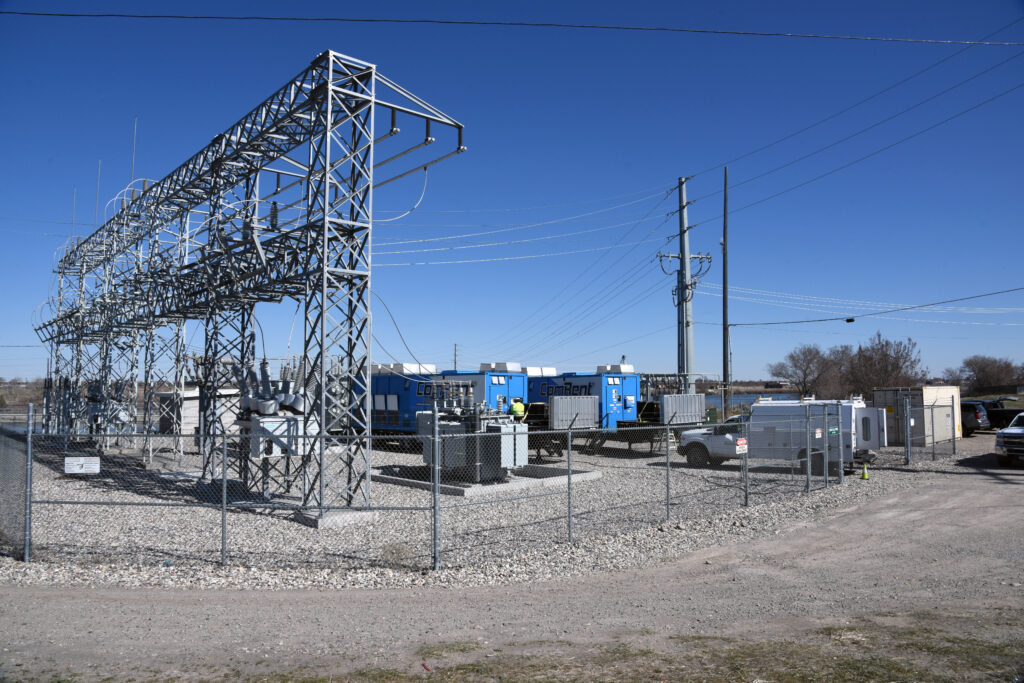 The U.S. electrical grid’s available capacity has remained largely unchanged for decades despite rising demand and the need to accommodate new power plants and renewable energy projects. Building new transmission lines could make new wind or solar plants prohibitively expensive. INL wind energy researchers believe moving more electricity through existing transmission and distribution lines is both possible and practical. The key is watching the weather. Wind cooling, a process wherein wind aids in dissipating heat, could enhance the capacity of transmission and distribution lines by mitigating line sag, which refers to the downward displacement of the lines due to their weight, and clearance concerns.
The U.S. electrical grid’s available capacity has remained largely unchanged for decades despite rising demand and the need to accommodate new power plants and renewable energy projects. Building new transmission lines could make new wind or solar plants prohibitively expensive. INL wind energy researchers believe moving more electricity through existing transmission and distribution lines is both possible and practical. The key is watching the weather. Wind cooling, a process wherein wind aids in dissipating heat, could enhance the capacity of transmission and distribution lines by mitigating line sag, which refers to the downward displacement of the lines due to their weight, and clearance concerns.
Dynamic Line Rating (DLR), a focus of WETO, is a methodology that factors environmental conditions, terrain, infrastructure details and algorithmic computations into the management of power transmission lines. The methodology could improve the efficiency and resiliency of existing equipment. In addition to day-to-day management and operations, it offers timely notification and capacity forecasts when conditions change.
WETO is funding efforts to research these efficiency gains in collaboration with regional power companies. INL researchers and Idaho Power have installed more than 40 weather stations along transmission lines in windy southern Idaho’s interstate utility corridor. The stations measure weather conditions along more than 450 line-miles of high-voltage transmission lines. Using the data, researchers employ computational fluid dynamics, a branch of fluid mechanics that utilizes numerical methods and algorithms to solve and analyze problems that involve fluid flows, to generate wind resource maps of smaller areas. They then integrate the results from various simulation areas to gain a comprehensive understanding of the larger picture. The research team continues to validate and refine its computational fluid dynamics-based weather simulation models to run faster and generate increasingly more accurate results for complex terrain.
Upgrades to the transmission system can be costly and time-consuming, which has created a backlog of transmission projects across the United States. Grid Enhancing Technologies (GETs) are devices or techniques that enhance existing grid hardware to prolong useful life or increase capacity. Gaining a better understanding of how various GETs can work together enables regulatory bodies and utilities to evaluate the benefits and risks of these devices and techniques. This ultimately leads to improvements in the use of existing transmission lines, supporting transmission upgrades as they occur, maximizing power transfer, and reducing lost revenue due to congestion and inefficiency.
Examples of GETs include:
Dynamic Line Rating: DLR uses weather conditions such as wind speed, direction, ambient air temperature or other measurements to determine the true temperature of a conductor and consequently the maximum power that can safely flow on a transmission line at a given time. This maximum power is often greater than the static rating normally assigned to a transmission line.
Power Flow Controller: A device that can actively push and pull power by changing the reactance (opposition to the change in electric current or voltage) in the lines. This is useful for redistributing power flow in a mesh network to relieve congestion.
Topology Optimization: This uses geological space and placement to improve infrastructure systems and Dynamic Transformer Rating, which is comparable to DLR, but for transformers instead of transmission lines.
The Transmission Optimization with Grid Enhancing Technologies project aims to help utilities and engineers understand the use of GETs, leveraging lessons learned from earlier efforts to streamline future investments. The project will include a demonstration of GETs using INL’s full-scale Power Grid Test Bed to examine unaddressed concerns such as integration challenges, cybersecurity and data management. INL will make data from the demonstration publicly available to benefit future users.
Megaprojects, or large-scale initiatives funded by the Department of Energy, have the potential to change the world for the better in dramatic ways including safer, better airplanes and buildings, integrated defense systems, and renewable energy systems. But megaprojects have suffered from escalating costs and missed deadlines. Undetected design errors can cascade into construction woes that can put a project over budget or behind schedule.
The cost of correcting a defect during conceptual design is 1,000 times less than correcting a defect discovered during construction. Digital engineering helps prevent such calamities. By integrating design, engineering and construction, the approach keeps cost and schedule on track while dramatically reducing overall program risk.
Idaho National Laboratory’s digital capabilities in support of wind energy extend to the Human System Simulation Laboratory, a reconfigurable virtual control center that safely tests new technologies before they are implemented. While the laboratory’s original mission was to simulate commercial nuclear reactor control rooms and improve their designs, the laboratory now serves as a virtual test bed for seamlessly integrating transmission line-dynamic line rating tools and data visualization into electric utility control centers. It provides a digital simulation environment compatible with all major control room designs and software platforms to aid development of utility efficiency and asset management.
The Power and Energy Real-Time Laboratory, located at INL, offers diverse expertise and the ability to co-simulate electrical, thermal and mechanical systems. It can integrate with microgrid test beds and simulation resources at other national laboratories.
On-site Wind for Rural Load Centers
Launched in 2022, the On-Site Wind for Rural Load Centers (On-Site Wind) initiative is a multi-laboratory research effort that empowers rural communities to realize the potential of distributed wind energy and tackle obstacles to accessible, reliable and affordable clean energy. The initiative is funded by the U.S. Department of Energy’s Wind Energy Technologies Office. Idaho National Laboratory collaborated with Pacific Northwest National Laboratory, the National Renewable Energy Laboratory, the National Rural Electric Cooperative Association and Iowa State University to address technical, economic and social barriers to distributed wind adoption.
Power and Energy Research & Development

The surge in renewable energy adoption is causing utilities, industries and everyday users to reevaluate how diverse energy systems like wind, solar and hydropower can function together. Renewables must be researched and developed to comprehend challenges and validate solutions before the new technologies are implemented.
In line with this mission, INL established the Power & Energy Real-Time Laboratory (PERL), which uses real-time digital simulators (RTDS) to validate and improve grid reliability and resiliency solutions. The simulators are instrumental in studying the integration of renewable sources like solar or wind power into the existing grid by assessing the impact of these variable energy sources on grid stability, power quality and overall system reliability.
For example, INL used the simulators to develop Type-5 wind drivetrain models to evaluate the behavior of traditional synchronous generators. The technology simulates different conditions and scenarios, leading to better optimization and overall stability of power systems.
INL’s PERL is one of the largest RTDS facilities of any national laboratory, and its researchers work closely with scientists from other national laboratories and academia. For example, INL partnered with the National Renewable Energy Laboratory (NREL), to answer questions about applying hydrogen fuel technology to the grid system. NREL also has RTDS, which means any data collected from their fuel cell research is immediately accessible by INL. This collaboration will advance understanding of how hydrogen fuel cells can support the power grid.
INL researchers are establishing RTDS connections with other national laboratories and universities, and they continue to seek new partnerships in the quest to solve the country’s most pressing renewable energy-related problems.
Security & Resilience

The U.S. electric grid is increasingly vulnerable to cyberattacks, but until recently, renewables such as wind power have received less attention from cyber criminals because they made up such a small percentage of the nation’s overall power generation.
But as wind power’s role in power generation has grown — in 2022, wind turbines provided about 10.2% of total U.S. utility-scale electricity generation — cybersecurity of wind plants has become increasingly important. Researchers at Idaho National Laboratory are leading several U.S. Department of Energy (DOE) Wind Energy Technologies Office (WETO)-funded efforts to protect the nation’s wind generation infrastructure.
Researchers at DOE’s national laboratories are undertaking five security-related wind projects:
- WETO’s Roadmap for Wind Cybersecurity
- Microgrids, Infrastructure Resilience, and Advanced Controls Launchpad
- Defense and Disaster Deployable Wind Turbine
- Hardening Wind Energy Systems from Cyber Threats
- Deployable Advanced Renewable Power System
The Roadmap for Wind Cybersecurity lays out a strategy that DOE will use to guide future research and development investments in partnership with industry.
The road map outlines strategic priorities based on the National Institute of Standards and Technology cybersecurity framework. INL is responsible for developing the document in collaboration with researchers at NREL and Sandia National Laboratories.
The Microgrids, Infrastructure Resilience, and Advanced Controls Launchpad worked to secure distributed wind facilities, whether they’re for defense applications, rural communities, university campuses or hospitals. As the name suggests, the project focused on wind infrastructure control systems and wind generation in the context of microgrids and hybrid distributed energy systems. The project was a collaboration among INL, NREL, Sandia and Pacific Northwest National Laboratory.
Dynamic Line Rating
 The U.S. electrical grid’s available capacity has remained largely unchanged for decades despite rising demand and the need to accommodate new power plants and renewable energy projects. Building new transmission lines could make new wind or solar plants prohibitively expensive. INL wind energy researchers believe moving more electricity through existing transmission and distribution lines is both possible and practical. The key is watching the weather. Wind cooling, a process wherein wind aids in dissipating heat, could enhance the capacity of transmission and distribution lines by mitigating line sag, which refers to the downward displacement of the lines due to their weight, and clearance concerns.
The U.S. electrical grid’s available capacity has remained largely unchanged for decades despite rising demand and the need to accommodate new power plants and renewable energy projects. Building new transmission lines could make new wind or solar plants prohibitively expensive. INL wind energy researchers believe moving more electricity through existing transmission and distribution lines is both possible and practical. The key is watching the weather. Wind cooling, a process wherein wind aids in dissipating heat, could enhance the capacity of transmission and distribution lines by mitigating line sag, which refers to the downward displacement of the lines due to their weight, and clearance concerns.
Dynamic Line Rating (DLR), a focus of WETO, is a methodology that factors environmental conditions, terrain, infrastructure details and algorithmic computations into the management of power transmission lines. The methodology could improve the efficiency and resiliency of existing equipment. In addition to day-to-day management and operations, it offers timely notification and capacity forecasts when conditions change.
WETO is funding efforts to research these efficiency gains in collaboration with regional power companies. INL researchers and Idaho Power have installed more than 40 weather stations along transmission lines in windy southern Idaho’s interstate utility corridor. The stations measure weather conditions along more than 450 line-miles of high-voltage transmission lines. Using the data, researchers employ computational fluid dynamics, a branch of fluid mechanics that utilizes numerical methods and algorithms to solve and analyze problems that involve fluid flows, to generate wind resource maps of smaller areas. They then integrate the results from various simulation areas to gain a comprehensive understanding of the larger picture. The research team continues to validate and refine its computational fluid dynamics-based weather simulation models to run faster and generate increasingly more accurate results for complex terrain.
Grid Enhancing Technologies
Upgrades to the transmission system can be costly and time-consuming, which has created a backlog of transmission projects across the United States. Grid Enhancing Technologies (GETs) are devices or techniques that enhance existing grid hardware to prolong useful life or increase capacity. Gaining a better understanding of how various GETs can work together enables regulatory bodies and utilities to evaluate the benefits and risks of these devices and techniques. This ultimately leads to improvements in the use of existing transmission lines, supporting transmission upgrades as they occur, maximizing power transfer, and reducing lost revenue due to congestion and inefficiency.
Examples of GETs include:
- Dynamic Line Rating: DLR uses weather conditions such as wind speed, direction, ambient air temperature or other measurements to determine the true temperature of a conductor and consequently the maximum power that can safely flow on a transmission line at a given time. This maximum power is often greater than the static rating normally assigned to a transmission line.
- Power Flow Controller: A device that can actively push and pull power by changing the reactance (opposition to the change in electric current or voltage) in the lines. This is useful for redistributing power flow in a mesh network to relieve congestion.
- Topology Optimization: This uses geological space and placement to improve infrastructure systems and Dynamic Transformer Rating, which is comparable to DLR, but for transformers instead of transmission lines.
The Transmission Optimization with Grid Enhancing Technologies project aims to help utilities and engineers understand the use of GETs, leveraging lessons learned from earlier efforts to streamline future investments. The project will include a demonstration of GETs using INL’s full-scale Power Grid Test Bed to examine unaddressed concerns such as integration challenges, cybersecurity and data management. INL will make data from the demonstration publicly available to benefit future users.
Digital Energineering
Megaprojects, or large-scale initiatives funded by the Department of Energy, have the potential to change the world for the better in dramatic ways including safer, better airplanes and buildings, integrated defense systems, and renewable energy systems. But megaprojects have suffered from escalating costs and missed deadlines. Undetected design errors can cascade into construction woes that can put a project over budget or behind schedule.
The cost of correcting a defect during conceptual design is 1,000 times less than correcting a defect discovered during construction. Digital engineering helps prevent such calamities. By integrating design, engineering and construction, the approach keeps cost and schedule on track while dramatically reducing overall program risk.
Idaho National Laboratory’s digital capabilities in support of wind energy extend to the Human System Simulation Laboratory, a reconfigurable virtual control center that safely tests new technologies before they are implemented. While the laboratory’s original mission was to simulate commercial nuclear reactor control rooms and improve their designs, the laboratory now serves as a virtual test bed for seamlessly integrating transmission line-dynamic line rating tools and data visualization into electric utility control centers. It provides a digital simulation environment compatible with all major control room designs and software platforms to aid development of utility efficiency and asset management.
The Power and Energy Real-Time Laboratory, located at INL, offers diverse expertise and the ability to co-simulate electrical, thermal and mechanical systems. It can integrate with microgrid test beds and simulation resources at other national laboratories.
Integrated Energy News
Camp Buehring, a United States military base nestled in northern Kuwait just 20 miles from the Iraqi border, faces a...Read More
When reviewing electric vehicles (EVs), automobile journalists usually cite a long list of superlatives — they’re quick, quiet, reliable and...Read More
Accurately forecasting how much power individual stations will demand from the electric grid is a major challenge facing the rapid...Read More

